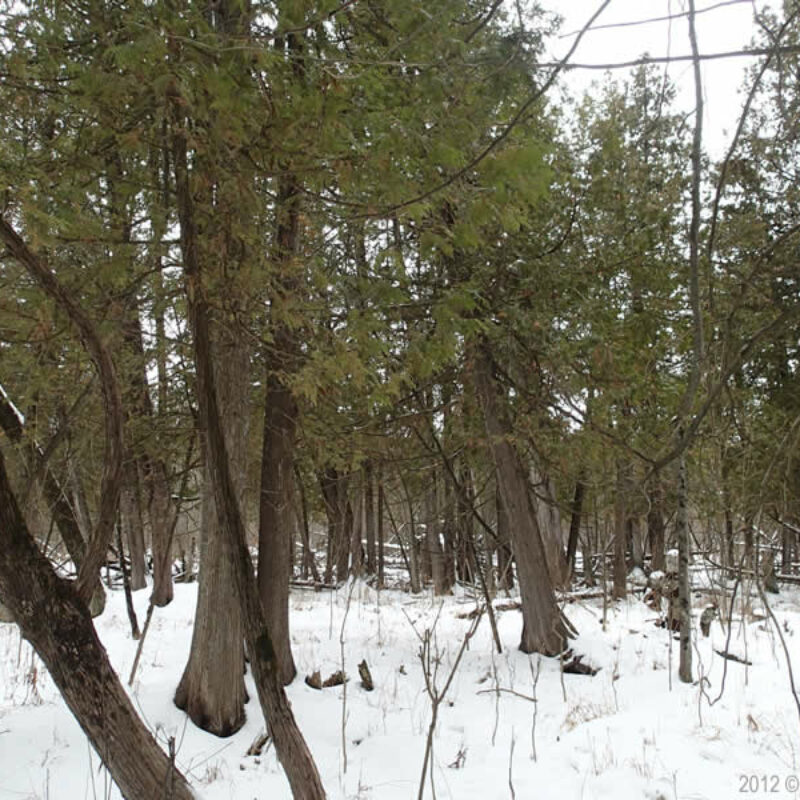Eastern White CedarThuja occidentalis
a.k.a. Arborvitae
An evergreen conifer up to 60' tall, usually cone shaped, with wide, spreading branches and aromatic. Well suited for screens, aromatic plantings, restorations, rain gardens, upland buffers and wildlife shelterbelts. This slow-growing species can be damaged by extreme drought and overbrowsing by deer. Tolerates clay soils.
USDA symbol: THOC2
General Information
| Plant Type | Tree |
|---|---|
| Height | 10 to 40 feet |
| Light Exposure | Sun |
| Soil Moisture | Medium |
| Bloom Color | Yellow, Green |

Tolerances
| Flooding / Inundation Tolerance | High |
|---|---|
| General Resilience | 7 |
| Salt Tolerance | Medium |
| Stress Tolerance | General Disturbance |
Pollinator Value: Medium
| Bloom Months | April to May |
|---|
Project Planning
| Project Type | Erosion Control, Rain Garden, Restoration, Upland Buffer |
|---|---|
| Coefficient of Conservatism | 10 |
| Herbivore Sensitivity | Medium |
| Lifespan | Perennial |
| Rate of Spread | Slow |
| Soil Stabilization | Deep |
| Vegetative Reproduction | Absent |
Range
| County | Aitkin, Anoka, Becker, Beltrami, Carlton, Cass, Clearwater, Cook, Crow Wing, Houston, Hubbard, Isanti, Itasca, Kandiyohi, Koochiching, Lake, Lake of the Woods, Pine, Roseau, St. Louis, Washington, Winona |
|---|---|
| Ecoregion | Driftless Area, Lake Agassiz Plain, North Central Hardwood Forests, Northern Glaciated Plains, Northern Lakes and Forests, Northern Minnesota Wetlands, Western Cornbelt Plains |
| Approximate Eco Province | Eastern Broadleaf Forest, Laurentian Mixed Forest, Prairie Parkland, Tallgrass Aspen Parklands |
